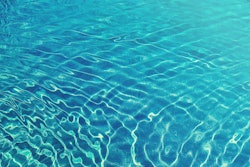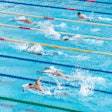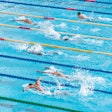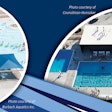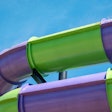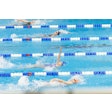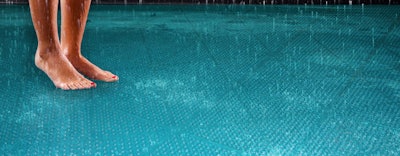
Wet floors are no one's friend. Not only do they represent a slip-and-fall liability risk, they're also a breeding ground for the worst germs and bacteria nature has to offer. Flooring solutions that create traction and allow water to drain are a must for places like pool decks, locker rooms and other high-traffic areas that get wet on a regular basis. Here are a few things to consider when shopping for wet-area flooring.
Type of flooring
A number of manufacturers make a variety of flooring solutions for wet areas. A large majority of these systems are perforated locking modular tiles made of durable vinyl and antimicrobial PVC for easy cleaning and maintenance. Water-resistant foam rubber padding is also an option, which is unique in that it actually becomes more slip-resistant once it's wet. Foam rubber solutions are sold in thick pads for limited areas, such as splash pads, or in 3/8-inch thick modules that can be used to cover larger areas. A few manufacturers also make thin traction systems, which adhere to existing pool decks and other potentially slippery surfaces.
RELATED: PRODUCT SPOTLIGHT: 2018 Aquatic Components
Cleaning and disinfecting
Raised modular systems are available as tiles, sheets or rolls and are easy to clean. In most cases they can be rolled back in order to clean dirt and water that has collected on the floor beneath. The tiles themselves can then be cleaned using detergent and a brush, or they can be cleaned using a high-pressure hose. Foam rubber systems, which are usually permanently affixed to the subsurface, can be cleaned by hand, or by using a machine that agitates the surface and then extracts the dirty water.
RELATED: SPOTLIGHT: Reflecting on a Decade of VGB Compliance
Cost
Modular systems that are sold in 12-inch-square tiles usually are priced at around $5 per square foot. Foam rubber systems, sold in 24-inch-square pieces, come in at about $7 to $10 per square foot. In both cases, the size of the project will ultimately determine the price.
Lifespan
Most wet-area flooring will last approximately 20 years.
RELATED: Find more solutions for your facility in the Buyers Guide
A note on liability
Softer foam rubber systems are worth considering in areas where running and intense play are expected. While slightly more expensive, these types of solutions not only provide additional traction but also provide a safer landing in the case of slip-and-fall accidents.
This article originally appeared in the May 2018 issue of Athletic Business with the title "Purchasing Guide" Athletic Business is a free magazine for professionals in the athletic, fitness and recreation industry. Click here to subscribe.



















